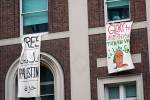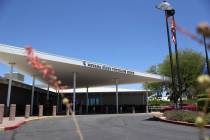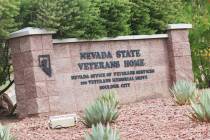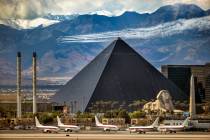Scientists altered tests of nukes at test site
A 90-foot-long gun scientists at the Nevada National Security Site use to check the nation’s nuclear weapons stockpile was shut down for two years after plutonium fragments escaped a primary containment vessel, federal officials said Thursday.
They found “an abnormal amount of contamination” after a plutonium experiment in February 2009, according to an audit report released by the Department of Energy. The high-powered gas gun known as JASPER – for Joint Actinide Shock Physics Experimental Research – is used to ensure that the warheads are safe and reliable.
“We did a shot, and when it occurred, the plutonium was not captured in the primary containment vessel, and some of it got out into the secondary containment chamber,” Nevada National Security Site spokesman Darwin Morgan said Thursday. “We had to get that cleaned up and find out why that happened.”
The DOE’s National Nuclear Security Administration spent $18.9 million to replace some equipment and the two containment chambers and return the gun to full operation for plutonium experiments in September , the inspector general’s report said. The shutdown required nuclear weapons scientists to rely on other experiments at another national laboratory to certify the stockpile.
Morgan said the secondary chamber was disposed in a radioactive waste complex at the Nevada test site. The primary containment vessel, about the size of a household trash can, is being kept in a holding area at the waste complex, awaiting disposal at the transuranic Waste Isolation Pilot Plant in New Mexico. Those vessels are always disposed of after a shot is conducted.
The JASPER gas gun facility is in the southern part of the test site, 65 miles northwest of Las Vegas. It is used by scientists from national laboratories in Livermore, Calif., and Los Alamos, N.M., to augment data produced from other stockpile stewardship facilities to check how plutonium ages to verify that U.S. nuclear warheads are safe and reliable in the absence of full-scale nuclear tests, which were put on hold indefinitely in 1992.
The audit found that Lawrence Livermore National Laboratory “did not have policies and procedures in place to ensure that deteriorated plutonium targets were not used in JASPER experiments,” wrote David Sedillo, director of the Western Audits Division for DOE’s Office of Inspector General.
“Livermore plans to analyze factors affecting the deterioration of targets and to evaluate methods for assessing the condition of targets prior to use in experiments. Additionally, Livermore officials told us that they will establish new controls over the use of targets after they have established a shelf life/expiration date,” Sedillo wrote Monday in a memo attached to the audit report.
Sedillo noted that “the impact of not conducting experiments at the JASPER facility since February 2009 resulted in Livermore and Los Alamos not having experimental data both planned to use to support the stockpile stewardship program and certification of the U.S. nuclear stockpile.”
Scientists relied on complementary data from other experiments including Sandia National Laboratories’ “Z” machine in Albuquerque, N.M., to meet milestones in support of the stockpile stewardship program.
JASPER uses gunpowder and compressed nitrogen gas to fire an ounce-size projectile of metal tantalum at nearly 16 times the speed of sound: 11,677 mph. The round projectile, the diameter of a 50-cent piece, impacts a gram-size amount of plutonium bomb material.
The JASPER gas gun is used to complement subcritical nuclear materials experiments that scientists have conducted at the test site since 1997. Those experiments use explosives to blow apart tiny amounts of plutonium but stop short of erupting into nuclear chain reactions.
The JASPER gas gun allows scientists to study plutonium as it blows apart at relatively slower velocities than is the case in subcritical experiments, or when hydrogen-isotope fuel is compressed by the Livermore lab’s gigantic laser system, the National Ignition Facility.
Ninety-six shots have been conducted at the JASPER facility since it was constructed in 1999. The first of 39 shots involving plutonium targets was conducted on July 8, 2003. The last plutonium shot was conducted March 14.
Contact reporter Keith Rogers at krogers@review
journal.com or 702-383-0308.
Joint Actinide Shock Physics Experimental Research (JASPER) Facility at the Nevada National Security Site


















